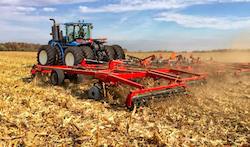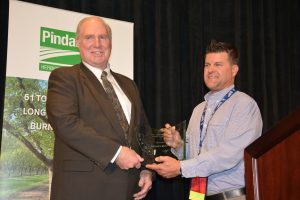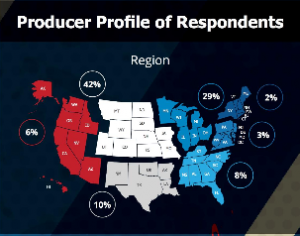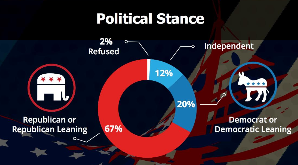 No matter where on the supply chain you are, members of the agriculture industry are always interested in the weather. Kyle Tamely, a senior ag meteorologist with MDA Weather Services, recently spoke at the Export Exchange 2016 conference, presenting on weather trends and the global grain market to international buyers and domestic suppliers of corn, ethanol co-products, sorghum and barley.
No matter where on the supply chain you are, members of the agriculture industry are always interested in the weather. Kyle Tamely, a senior ag meteorologist with MDA Weather Services, recently spoke at the Export Exchange 2016 conference, presenting on weather trends and the global grain market to international buyers and domestic suppliers of corn, ethanol co-products, sorghum and barley.
La Nina dominated his talk as Tamely explained how the weather phenomenon controls global weather. The Tropical weather patterns of La Nina occur when stronger than average trade winds move warmer water to the Western Pacific Ocean and cooler water moves to Central and Eastern Pacific. This pattern, the exact opposite of El Nino, is technically defined after five 3-month periods of water temperatures altered by 1/2 a degree Celsius. While the current situation may or may not reach the technical definition, Tamely says the affects on global weather will occur anyhow.
For the U.S., La Nina generally means dryer weather in the southwest, but for growers the impact will be minimal, with harvest unaffected overall. North America can expect slightly less than average rain fall now through the winter, however the north faces the possibility of high levels of snow pack through the winter.
South America may also see slightly dryer weather, although Brazil is typically unaffected by La Nina. Argentina is currently seeing good rains headed into the growing season, but too much rain in southern Brazil could affect wheat harvest. Tamely predicts a rise in crop production for South American over last season, due in part to the rebound from Brazil’s recent drought.
While Western Europe is still dry, Eastern Europe’s conditions are favorable for winter crops. A warmer than average winter should help decrease winter kill as well. The Black Sea region was dry until just recently, but rainfall has returned soil conditions to normal and above average winter temperatures there will be good for wheat too.
Australia has seen more precipitation, thanks to La Nina. In some areas the quality of the wheat harvest is being affected by damp conditions and an early frost and cool conditions aren’t helping. The continent will continue to see wet weather as La Nina continues through the end of the year. China has seen wet weather as well, but conditions are improving for harvest. Areas that were too dry are getting a boost from typhoons in the region. South Africa was hit hard by El Nino last year, but rainfall is returning to normal to above normal, relieving pressure after the drought.
While it’s too soon to say, Tamely looks for this weak La Nina too peter out with 2016 rather than gain strength. It is unclear what direction 2017 will take, but the forecast currently suggests water temperatures next year will be close to normal.
You can listen to Kyle Tamely’s talk here to get the details for yourself: [wpaudio url=”http://traffic.libsyn.com/zimmcomm/exex16-tapley.mp3″ text=”Kyle Tamely, MDA Weather Services”]












